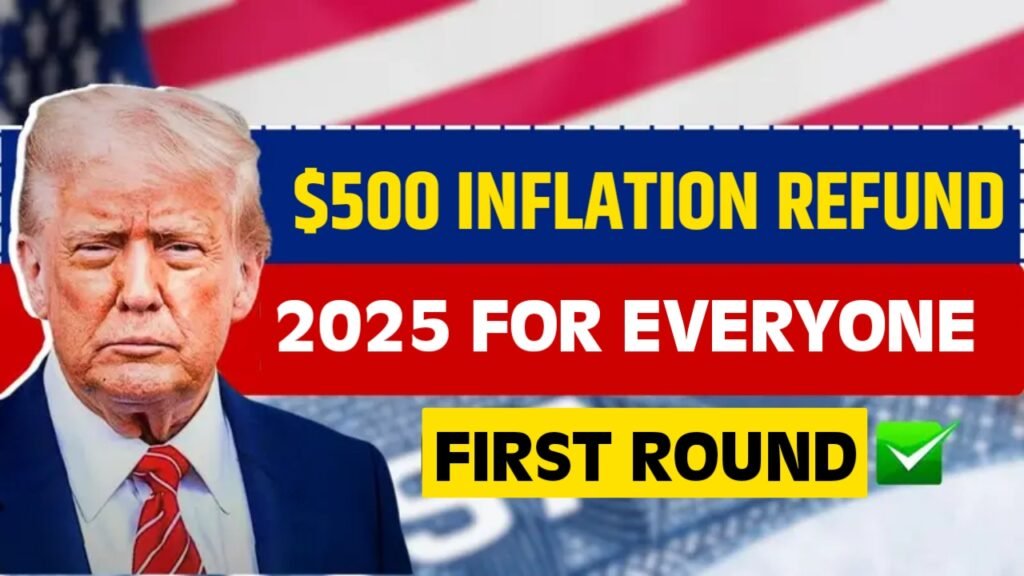The New York State government has announced a $500 inflation refund program aimed at easing the financial stress caused by rising costs. This initiative, led by Governor Kathy Hochul, is designed to assist millions of households affected by the increasing prices of basic needs such as rent, food, fuel, and utilities. The refund checks will be distributed later this year, starting from October 2025, directly to eligible taxpayers across the state.
This move comes as part of the government’s broader commitment to support middle- and low-income citizens who have been hardest hit by inflation. The initiative is estimated to benefit nearly 8.2 million taxpayers, bringing direct cash assistance without requiring any application or paperwork.
Funding Source and Objective
According to the New York State Department of Taxation and Finance, the funds for this program will come from the state’s 2023–24 budget surplus. Due to higher-than-expected tax collections last year, the state accumulated additional revenue, which will now be redirected back to citizens. The total fund allocation is around 3 billion USD, aimed at stimulating local markets and boosting consumer spending.
Governor Hochul emphasized that this program reflects the state’s “People-First” policy, ensuring hardworking citizens receive tangible support during tough times. She noted that while this refund may not completely offset inflation, it provides meaningful assistance to help households stabilize their finances.
Eligibility and Payment Schedule
To qualify for the $500 refund, residents must have filed a New York State Resident Income Tax Return (Form IT-201) for the 2023 tax year. Those who did not file their returns or are listed as dependents on another person’s tax return will not be eligible.
The state will begin mailing checks by late September 2025, with most residents expected to receive their payments by October or November 2025. Citizens are advised to verify and update their mailing addresses with the Department of Taxation and Finance to prevent delivery delays. No separate application is required, as the checks will be automatically sent based on existing tax records.
Tax and Safety Guidelines
The refund amount will be tax-free at the state level, but recipients must report it in their federal income tax return in compliance with IRS regulations.
State officials have also warned against fraudulent messages or calls claiming to collect personal information for the refund. The Department of Taxation and Finance never requests bank details or personal data through emails, calls, or text messages. Citizens are urged to verify any suspicious communication on the department’s official website or helpline.
Economic Impact and Public Response
Economists expect this refund to have a positive impact on local businesses and short-term consumer spending. The funds will circulate quickly through the local economy, encouraging growth during the final quarter of 2025.
New York’s inflation rate remains high, with food prices up by 9.8% and utilities by over 11%. In this environment, the refund is seen as a practical and compassionate measure to restore public confidence and financial stability. Experts also believe that this initiative could inspire similar relief programs in other U.S. states.
Governor Hochul remarked, “This is a tribute to our hardworking residents. By putting money directly into the hands of New Yorkers, we are helping families stay afloat while strengthening our economy.
A Step Toward Stability
In a time when inflation continues to challenge everyday life, the New York government’s $500 refund plan offers hope and support. It represents not just financial aid but also the government’s acknowledgment of citizens’ resilience. The funds will help families pay bills, cover rent, and manage daily essentials, proving that small but direct action can make a real difference in people’s lives.
Disclaimer: This article is based on publicly available reports and official statements from the New York State Department of Taxation and Finance. Specific details, such as eligibility thresholds and distribution timelines, may change based on state policies. Readers are advised to refer to the official New York Tax Department website for verified updates before making any financial decisions.
